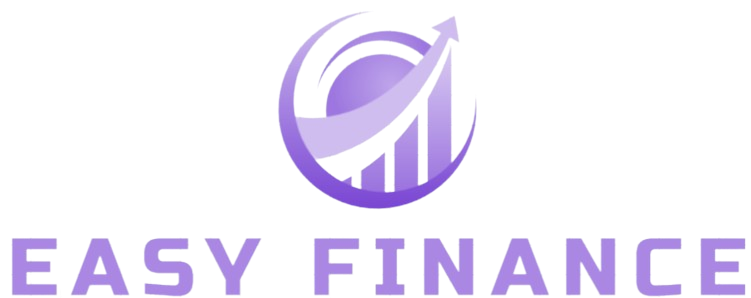Finding the best loans with low-interest rates can save you a lot of money over the life of the loan. Whether you’re looking to buy a home, purchase a car, or finance a personal project, understanding how to secure a low-interest loan is crucial. In this article, we’ll explore the different types of loans, factors affecting interest rates, tips for improving your chances of securing a low-interest loan, and more.
Interest Rates
What is an Interest Rate?
An interest rate is the cost of borrowing money, expressed as a percentage of the loan amount. When you take out a loan, you agree to repay not only the principal amount but also an additional percentage that represents the interest. This interest is essentially the fee charged by the lender for allowing you to use their money. For instance, if you borrow $10,000 at an interest rate of 5%, you’ll end up paying back $10,500 over the loan term, assuming simple interest. Interest rates play a crucial role in determining the total cost of the loan, influencing your monthly payments and the total amount paid over the life of the loan. Therefore, securing the lowest possible interest rate can lead to significant savings.
Interest rates are not uniform; they vary based on several factors. One primary determinant is the risk associated with lending money to you. Lenders assess your creditworthiness, which is often reflected in your credit score. A higher credit score generally indicates a lower risk for the lender, which can result in a lower interest rate. Other factors include the loan amount, the term of the loan, and whether the loan is secured or unsecured. Additionally, broader economic conditions and central bank policies also impact interest rates. Central banks set base rates that influence the rates offered by commercial lenders, affecting everything from personal loans to mortgages.
How Interest Rates are Determined
Interest rates are influenced by a combination of economic factors, lender policies, and individual borrower profiles. Central banks, such as the Federal Reserve in the United States, play a pivotal role in determining the base interest rates that affect the entire financial market. When central banks adjust these base rates, it directly impacts the rates that commercial banks and other lenders can offer to their customers. For example, if the central bank lowers the base rate, commercial banks may reduce their interest rates, making borrowing cheaper for consumers and businesses.
In addition to central bank policies, lenders consider the specific financial situation of each borrower. This includes evaluating the borrower’s credit score, which reflects their credit history and current creditworthiness. A higher credit score typically means lower interest rates because the lender perceives less risk in lending to that individual. Loan terms also affect interest rates; shorter-term loans usually have lower rates compared to longer-term loans. The amount being borrowed and the presence of collateral (in the case of secured loans) further influence the interest rate. Overall, a combination of these factors helps lenders determine the appropriate interest rate for each loan.
Types of Loans
Secured vs. Unsecured Loans
- Secured Loans: These loans are backed by collateral, such as a house or car. Because the lender has a security interest in the collateral, these loans often come with lower interest rates. In the event that the borrower defaults on the loan, the lender can seize the collateral to recover their losses. Examples of secured loans include mortgage loans and auto loans. The presence of collateral reduces the lender’s risk, which is why these loans typically offer more favorable terms to borrowers.
- Unsecured Loans: These loans do not require collateral and typically have higher interest rates due to the increased risk to the lender. Since there is no asset backing the loan, lenders rely heavily on the borrower’s creditworthiness and financial history to determine the interest rate. Common examples of unsecured loans include personal loans and credit cards. Because the lender faces greater risk without collateral, the interest rates on unsecured loans are generally higher, reflecting the increased risk.
Fixed vs. Variable Interest Rate Loans
- Fixed Interest Rate Loans: The interest rate remains the same throughout the loan term, providing predictability in your payments. This stability makes it easier to budget your finances since your monthly payments won’t change over time. Fixed-rate loans are particularly popular for long-term loans, such as mortgages, because they protect borrowers from fluctuations in interest rates.
- Variable Interest Rate Loans: The interest rate can fluctuate based on market conditions, potentially leading to lower initial rates but variable payments over time. Variable-rate loans can be advantageous if interest rates are expected to decline, but they also carry the risk of increasing rates, which can raise your monthly payments. These loans are often used for short-term financing or in situations where the borrower expects interest rates to decrease.
Personal Loans
Personal loans can be used for various purposes, including debt consolidation, home improvements, and major purchases. They can be either secured or unsecured, depending on the lender and the borrower’s credit profile. Secured personal loans, backed by collateral like a savings account or certificate of deposit, typically offer lower interest rates. Unsecured personal loans, while more accessible to those without collateral, usually come with higher rates due to the increased risk to the lender.
Personal loans are versatile financial tools that can help manage large expenses or consolidate high-interest debt into a single, lower-interest payment. The terms of personal loans vary widely, with repayment periods ranging from a few months to several years. Interest rates are influenced by the borrower’s credit score, income, and the lender’s policies. Borrowers with strong credit profiles can often secure more favorable terms and lower interest rates.
Mortgage Loans
These loans are used to finance the purchase of a home. Mortgage loans typically have longer terms and lower interest rates compared to other loan types, as they are secured by the property being purchased. Mortgages are a fundamental component of home buying, with repayment terms commonly spanning 15 to 30 years. Interest rates on mortgages can be fixed or variable, with fixed-rate mortgages offering stability in monthly payments and variable-rate mortgages potentially offering lower initial rates that adjust over time.
The process of obtaining a mortgage involves rigorous assessment of the borrower’s financial status, including credit history, income, and existing debt. Lenders also consider the value and condition of the property being purchased. Mortgage loans come with various options, including government-backed loans like FHA and VA loans, which offer unique benefits for qualifying borrowers, such as lower down payments and more flexible credit requirements.
Auto Loans
Auto loans are specifically designed for purchasing vehicles. Like mortgage loans, they can be secured by the vehicle itself, which often results in lower interest rates. Auto loans are typically shorter-term loans, with repayment periods ranging from three to seven years. Because the car serves as collateral, lenders face reduced risk, allowing them to offer competitive interest rates to borrowers.
When applying for an auto loan, factors such as the borrower’s credit score, income, and the vehicle’s value and condition are taken into account. Dealerships, banks, credit unions, and online lenders offer various financing options. It’s crucial to compare these options to find the best interest rates and terms. Additionally, some auto loans may come with incentives, such as zero percent financing or cashback offers, especially on new vehicles.
Student Loans
Student loans help cover the cost of education. Federal student loans generally offer lower interest rates and more flexible repayment terms compared to private student loans. These loans are a vital resource for students who need financial assistance to pay for tuition, books, and living expenses. Federal student loans, such as Direct Subsidized and Unsubsidized Loans, often have fixed interest rates and offer benefits like income-driven repayment plans and loan forgiveness programs.
Private student loans, provided by banks, credit unions, and other lenders, can supplement federal loans when additional funds are needed. However, they typically come with higher interest rates and less flexible repayment options. Borrowers should exhaust federal loan options before turning to private loans. It’s also important to consider the long-term impact of student loans, including the total amount borrowed and the repayment terms, to manage debt effectively after graduation.
Factors Affecting Loan Interest Rates
Interest rates on loans are influenced by various factors, including your credit score, the loan term, and the loan amount. Understanding these elements can help you secure better rates and save money over the life of your loan.
Credit Score
Your credit score is one of the most significant factors in determining your loan interest rate. It is a numerical representation of your creditworthiness, based on your credit history, payment patterns, and debt levels. A higher credit score indicates to lenders that you are a lower risk borrower, often resulting in lower interest rates. Conversely, a lower credit score suggests higher risk, leading to higher interest rates.
| Credit Score Range | Risk Level | Typical Interest Rate Impact | Example Scenarios |
| 750-850 | Very Low Risk | Significantly Lower Interest Rates | Prime mortgage rates, best personal loans |
| 700-749 | Low Risk | Lower Interest Rates | Competitive rates on auto loans, credit cards |
| 650-699 | Moderate Risk | Average Interest Rates | Standard rates for unsecured loans |
| 600-649 | High Risk | Higher Interest Rates | Higher rates on personal and auto loans |
| Below 600 | Very High Risk | Significantly Higher Interest Rates | Subprime loans, potential loan denials |
Loan Term
The term of the loan, or the length of time you have to repay it, also affects the interest rate. Generally, shorter loan terms come with lower interest rates because the lender’s risk is reduced – they get their money back more quickly and with less exposure to potential default. On the other hand, longer loan terms tend to have higher interest rates since the risk of not being repaid increases over time.
| Loan Term Length | Risk Level | Typical Interest Rate Impact | Example Scenarios |
| 1-3 years | Very Low Risk | Lower Interest Rates | Short-term personal loans, car loans |
| 4-6 years | Low to Moderate Risk | Moderate Interest Rates | Standard auto loans, medium-term personal loans |
| 7-10 years | Moderate to High Risk | Higher Interest Rates | Long-term personal loans, some mortgages |
| Over 10 years | High Risk | Significantly Higher Interest Rates | Long-term mortgages, student loans |
Loan Amount
The amount you borrow can significantly influence the interest rate. Larger loan amounts might attract higher interest rates because they represent a greater risk to the lender. The rationale is that the more money lent out, the higher the potential loss if the borrower defaults. Conversely, smaller loan amounts might have lower interest rates, reflecting the reduced risk.
| Loan Amount | Risk Level | Typical Interest Rate Impact | Example Scenarios |
| $1,000 – $10,000 | Low Risk | Lower Interest Rates | Small personal loans, small business loans |
| $10,001 – $50,000 | Moderate Risk | Moderate Interest Rates | Mid-sized personal loans, home improvement loans |
| $50,001 – $100,000 | High Risk | Higher Interest Rates | Larger personal loans, significant auto loans |
| Over $100,000 | Very High Risk | Significantly Higher Interest Rates | Large mortgages, substantial business loans |
Understanding these factors and how they influence loan interest rates can help you make more informed decisions when applying for a loan. By improving your credit score, opting for shorter loan terms, and carefully considering the loan amount, you can increase your chances of securing a loan with favorable interest rates.




